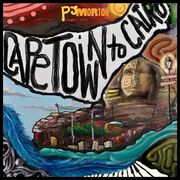New York, NY (Top40 Charts) Anastasia Coope has shared "Sorghum," the third single from her forthcoming debut album, Darning Woman. Out May 31 on Jagjaguwar, Darning Woman is being hailed by The Wire as "an album you can almost feel around you," praising Coope's "strikingly confident and vibrant approach."
Among the record's most serene songs, this latest single was inspired by words overheard in a passing conversation: "She's with me and I'm not happy about it." That casual yet brutal rejection morphed into a song about finding common ground in a shared space with someone else, opening and closing with the contrasting refrain, "I see something there, you liked it, too, and waited there, I did, for you."
The music video, directed by Moses Archuleta, finds Coope among a forest clearing as birdsong waveforms scroll by.
Coope's debut single, "He's On His Way Home, We Don't Live Together," was released in February to acclaim from FADER, NYLON, and Paste — all of whom featured the track in their "best songs of the week" coverage. Stereogum also praised Coope's "strange sonic realms" as "bright and weirdly ominous." Read Coope's latest interview with the New York culture mag Byline here.
Ahead of Coope's May 31 album release party at Baby's All Right, she has launched a giveaway of an original painting featured inside the album's artwork. More details can be found on her Instagram here.
Coope's forthcoming debut, Darning Woman, is a rich tapestry of surrealist psychedelia that evokes a precipice beyond the material world. Like a dispatch from another past, or a memory pressing up against the veil, it's unmoored in space and time: ghostly, spectral, far-out folk. Here, Coope creates whirling layers of expressive, stratified vocals, suggesting lost lullabies contorted into alluringly strange, staccato shapes.
Born to an English father and American mother (whose original
Martin acoustic she uses to compose), the 21-year-old, Brooklyn-based artist was raised in the village of Cold Spring, NY— and indeed, the Hudson Valley's wintry landscapes and small towns feel present in Darning Woman's isolated tones. The record's creation was largely insular.
While staying at a relative's vacant home in Beacon, NY, Coope began experimenting with recording software in an empty living room, singing directly into the open space. Until that point, she had mainly thought of herself as a visual artist, but immediately, it felt right. Throughout the next year, she taught herself to sing in different styles, hocketing and layering her voice to construct vast, sweeping choirs.
"I was able to envision a room of things happening, rather than me just building something," Coope says. "This record was me starting to think spatially about music."
As such, her songwriting revolved around intuition and aesthetics, rather than precise lyrical storytelling. Throughout Darning Woman, Coope invokes a sense of movement through the use of makeshift mantras: the word "woman" appears repeatedly throughout the album's song titles. For Coope, it was an unconscious motif.
"On this album, the word 'woman' represents the idea of a muse, or an idol, or an icon," she says. "It was a mixture of the maternal with the idea of a character, a star."
A slew of cultural touchstones ultimately informed Coope's approach to music making: the avant-garde art-rock of the '80s; Trish Keenan or Su Tissue or
Brigitte Fontaine; medieval choruses and church choirs; contemporary folk; the romantic close-harmonies groups of the '50s; Meara O'Reilly's Hockets for Two Voices.
Like her paintings, drawings, and mixed media artworks,
Anastasia Coope's songwriting yields an esoteric distance. It's the feeling of the work pushing back on you, inviting you to see and feel, rather than know. Yet, for all that's arcane here, Darning Woman is rooted deeply in the things we can touch.























